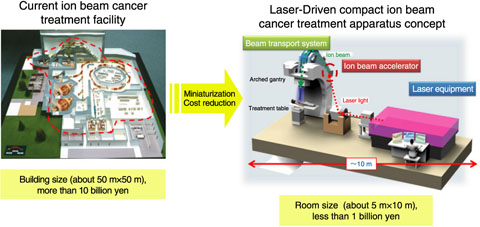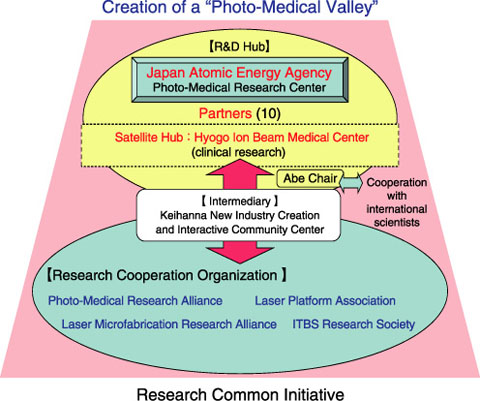
Fig.5-1 The current ion beam medical facility and outline of a laser-driven ion beam apparatus

Fig.5-2 Common research initiative for creation of a “Photo-Medical Valley”
The JAEA Photo-Medical Research Center (PMRC) is promoting innovative development of a laser-driven ion beam apparatus for medical applications. This device employs ion acceleration by a high power laser in order to significantly reduce overall size and cost, which can then facilitate wider access to ion beam cancer treatment (Fig.5-1).
The PMRC project has been pursued since 2007 in collaboration with ten partners (Fig.5-2), and is funded by the Special Coordination Fund for Promoting Science and Technology commissioned by the Ministry of Education, Culture, Sports, Science and Technology.
To advance development of a laser-driven ion beam medical device, we conducted research and development to produce a proton beam suitable for cancer therapy. We verified the world’s first laser-driven ion acceleration method using a nanoparticle target. This research mainly targeted a key for the success of the PMRC project, namely a significant increase in the number of accelerated protons. Laser irradiation of nanoparticle targets has accelerated ions to maximum energies that exceed 20 MeV per nucleon (Topic 5-1). We also conducted studies of other target types and laser irradiation conditions. Thin film targets have yielded protons that were accelerated up to kinetic energies of 14 MeV.
To verify that a laser-driven proton beam can be effective in cancer therapy, we completed experiments to determine the effect of proton irradiation of cancer cells. For the first time in the world, we successfully induced DNA double strand breaks in human-derived cancer cells by irradiating them with laser-driven proton beams. We also evaluated the biological effect of cell irradiation and measured self-activated gamma emission from phantom targets using a proton irradiation research chamber. This apparatus was built at the Hyogo Ion Beam Medical Center to determine if there is any difference in the irradiation effect between a laser-driven ion beam and an ion beam delivered by an existing accelerator.
As part of our efforts with industrial applications, we investigated the specifications of equipment and implementation of proton-induced radio-activation to study wear on metal surfaces. We also initiated clinical tests of a minimally invasive fiber-based medical device, together with development of integrated software to smoothly control it.
Based on these results, we will advance this project during this fiscal year and resubmit our proposal for program evaluation by the Special Coordination Fund for Promoting Science and Technology commissioned by the Ministry of Education, Culture, Sports, Science and Technology of Japan (MEXT).